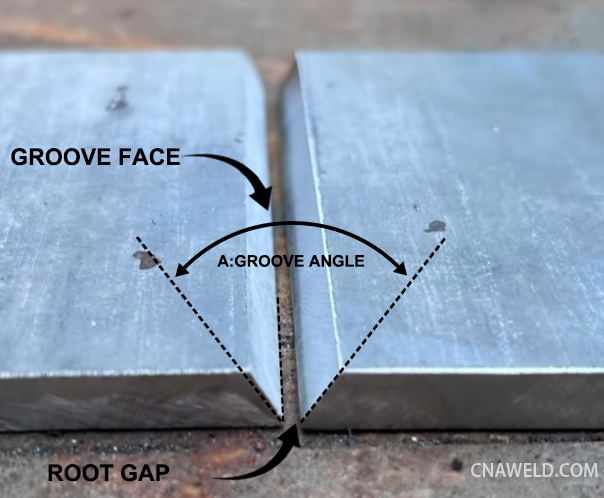What is V groove weld?
V groove welds are a vital component in various industries, playing a crucial role in joining metals efficiently and securely. Whether you are a seasoned welder or just starting out, understanding the process of welding V groove welds is essential. In this comprehensive guide, we will walk you through the steps to achieve flawless V groove welds, highlight the benefits of this technique, and explore the application areas that customers prioritize when purchasing these welds.
Table of Contents
ToggleEssential Preparations
To begin with, let’s delve into the process of welding V-groove welds using the 2G welding position. The first step is to prepare the edges of the materials to be joined. This involves cutting a V-shaped groove into both pieces, creating a channel for the welding material. The groove must be precise and uniform to ensure a strong and consistent weld. In the 2G position, the workpieces are placed vertically, with the weld performed horizontally. Once the preparation is complete, the pieces are positioned and securely clamped to maintain alignment throughout the process.
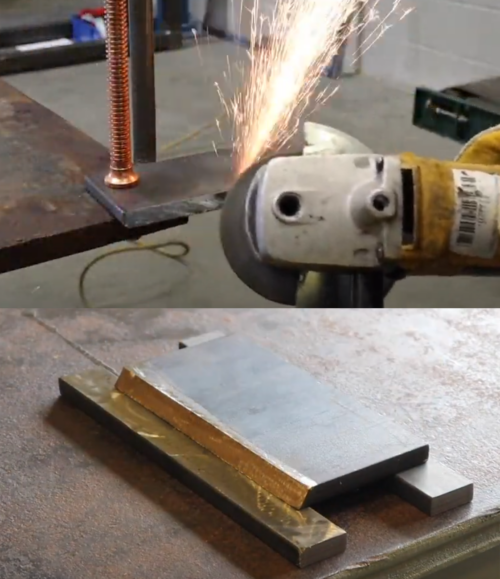
Processing V-groove
Next, the welding technique comes into play. V groove welds are commonly performed using arc welding methods such as gas metal arc welding (GMAW) or shielded metal arc welding (SMAW). These methods offer excellent control over the arc and provide high-quality welds. It is important to maintain a stable arc length, suitable voltage, and appropriate welding speed to achieve desired results. Proper heat input and filler metal selection are also critical factors to consider.
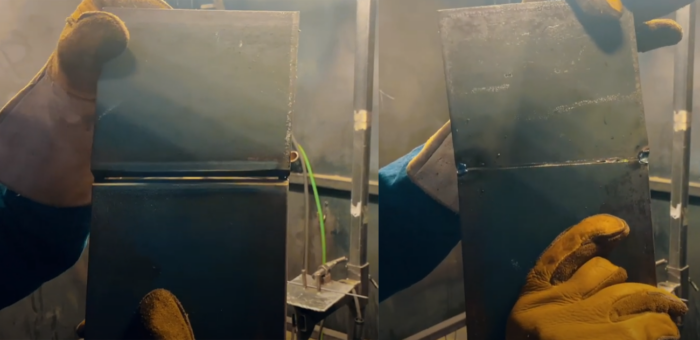
Source:https://www.youtube.com/watch?v=IZ_EqwNwIIw
Step-by-Step Process for V Groove Welding
Step 1: Root Pass
The welding process begins with the root pass, where the welder carefully positions the torch at a precise angle, typically around 90 degrees, to achieve full penetration into the base of the V-groove. The arc is adjusted to ensure it penetrates through to the other side of the plate, creating a solid foundation for the weld. This penetration results in the formation of a back bead on the opposite side, which signifies complete fusion between the two workpieces.
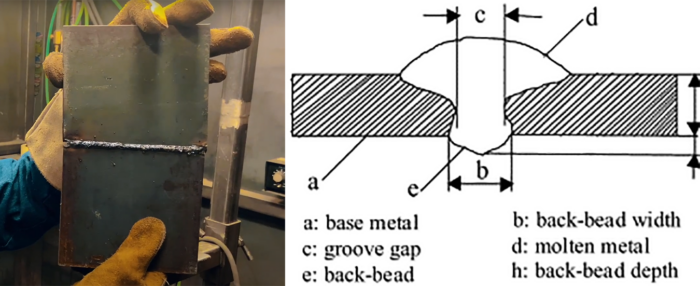
Back Bead
Step 2: Filler Passes
After establishing the root pass, filler passes are applied to build up the weld and reinforce its strength. The welder uses a steady weaving motion to evenly deposit filler material into the groove while ensuring complete fusion with the groove walls. This step compensates for the slight depression caused by the root pass, ensuring the joint has sufficient strength and a smooth transition between layers.
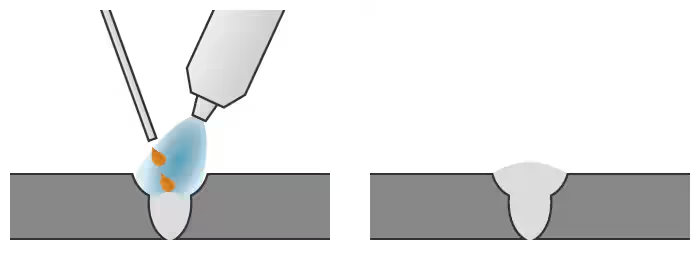
Filler Passes
Source:https://www.keyence.com/ss/products/measure/welding/trouble/groove.jsp
Step 3: Cap Pass
The final step involves the application of the cap pass to seal the weld and enhance its structural integrity. The welder carefully lays a smooth, uniform bead over the entire groove, ensuring a consistent finish that eliminates potential stress points. The cap pass also improves the appearance of the weld, providing a professional and visually appealing result.
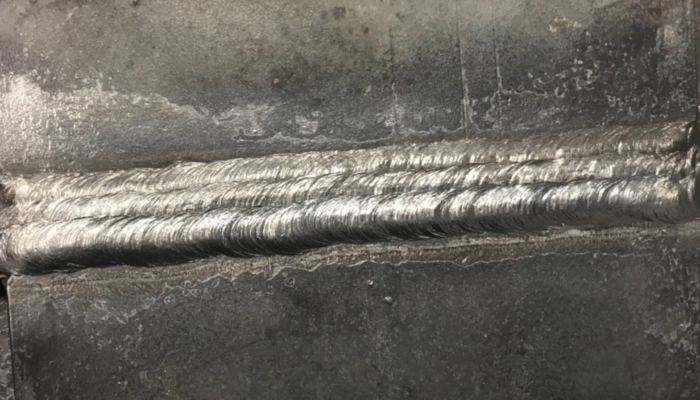
Source:https://youtu.be/RGmgFtS5Np0
Advantages and Considerations for V Groove Weld
One key advantage of V groove welds is their superior strength and reliability. The V shape of the groove ensures a larger volume of welding material, resulting in enhanced joint strength. This makes V groove welds ideal for applications requiring structural integrity, such as building construction, shipbuilding, and heavy machinery manufacturing. For instance, in the construction of bridges, V groove welds are used to join piers and girders, creating a robust framework that can withstand immense loads and forces.
Additionally, V groove welds offer greater control over the weld penetration, minimizing the risk of incomplete fusion or excessive reinforcement. This control is crucial in industries like pressure vessel manufacturing, where weld quality is of utmost importance to ensure the safe containment of high-pressure substances. V groove welds provide a reliable solution for such applications, delivering welds that meet strict quality standards and regulations.
Furthermore, V groove welds are often preferred in industries where aesthetics play a significant role. The sleek and clean appearance of these welds makes them highly suitable for applications where visible welding joints are unavoidable. In architectural metalwork, for instance, V groove welds are extensively employed to connect decorative elements, ensuring an aesthetically pleasing finish without compromising structural integrity.
When purchasing V groove welds, customers prioritize certain aspects to ensure they are investing in the right product. One significant consideration is the material compatibility. It is crucial to select V groove welds that are specifically designed for the metals being joined. Manufacturers often provide compatibility charts, helping customers choose the appropriate product for their specific needs.
Another essential factor is the durability and longevity of the welds. Customers seek V groove welds that can withstand harsh environmental conditions, corrosion, and mechanical stress. To address this concern, manufacturers often offer a variety of specialized coatings and treatments that enhance the weld’s performance and longevity. These treatments can include protective coatings, heat treatments, or even specialized alloys tailored to resist specific corrosive agents.
Cost-effectiveness is also a significant consideration for customers. While the quality and reliability of the welds are paramount, customers seek welds that provide excellent value for their investment. Manufacturers often showcase the superior strength and longevity of V groove welds, allowing customers to save on future maintenance and repairs.
Lastly, customers also prioritize the ease of use and versatility of V groove welds. Welders seek welds that are user-friendly and compatible with a range of welding techniques and equipment. Manufacturers continually innovate and develop welding products that cater to diverse welding methods, making V groove welds accessible to both seasoned professionals and those new to the field.
Conclusion
In conclusion, mastering the art of welding V groove welds is essential for welders across various industries. Understanding the process, benefits, and application areas of V groove welds empowers welders to achieve flawless welds leading to stronger connections. Whether it’s in bridge construction, pressure vessel manufacturing, or architectural metalwork, V groove welds play a vital role in ensuring structural integrity, delivering aesthetic appeal, and meeting stringent quality standards. By considering material compatibility, durability, cost-effectiveness, and versatility, customers can make informed decisions when choosing V groove welds that offer exceptional value and performance. So, put on your welding helmet and unleash your creativity through V groove welding!

